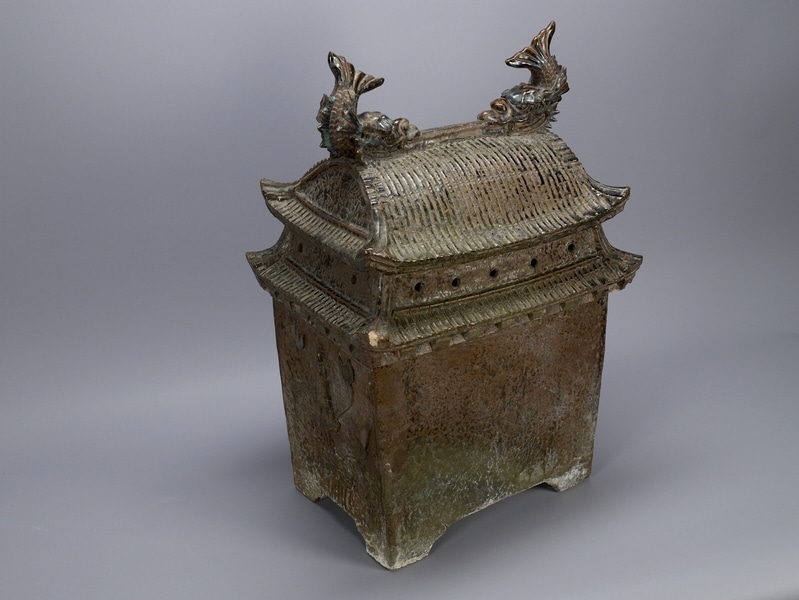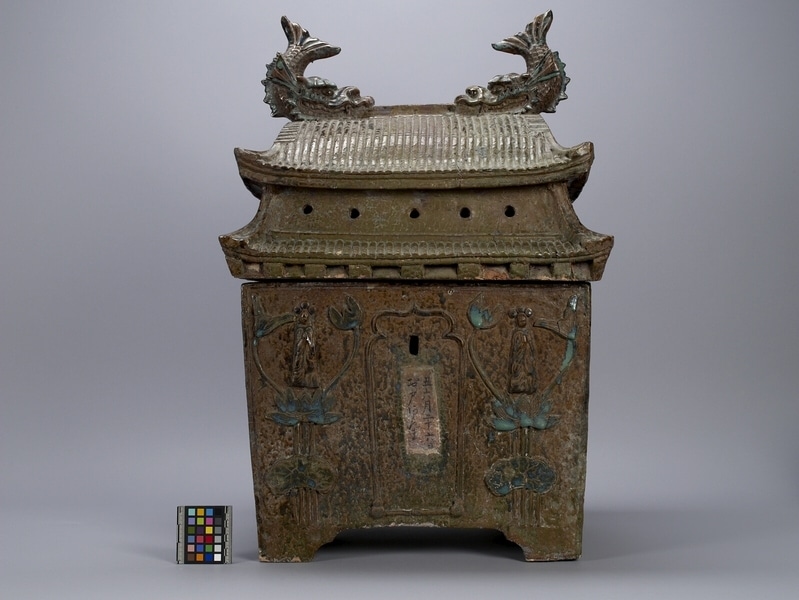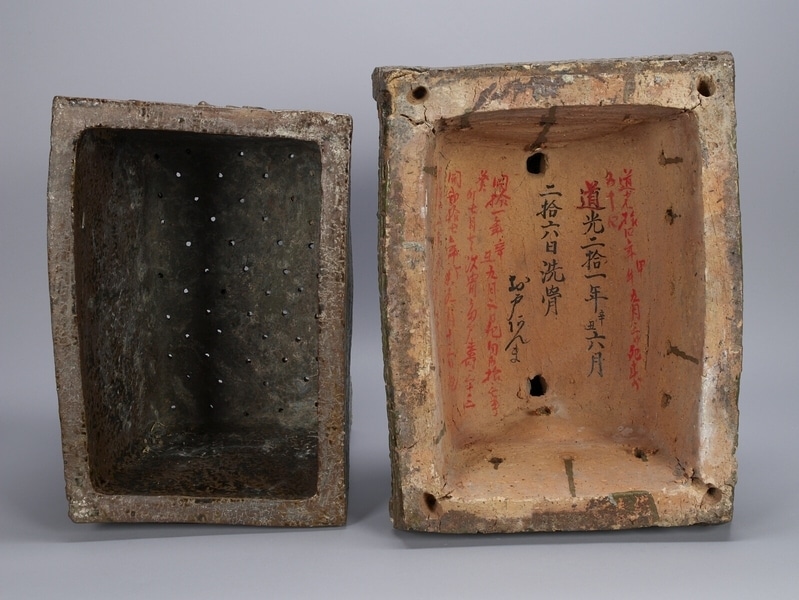Urn Item Number: N2.1047 a-b from the MOA: University of British Columbia



Description
Two piece urn, with body (part a) and lid (part b). Made in a style called goten-gata zushigame (御殿型厨子甕), an urn in the form of a palace. On the front are two Buddhist figures, each in the centre of a lotus, in relief, in turquoise on a dark brown ground. On the top of the lid, are two three-dimensional shachihoko (鯱鉾/鯱), a mythical sea creature with the head of a tiger or dragon and the body of a fish. On the front is an epitaph, called migachi or miigachi (ミガチ/ミーガチ/銘書) in Okinawan. There is another migachi under the lid.
History Of Use
Okinawans used to practice shinkuchi/senkotsu (シンクチ/洗骨/ bone-washing) as a form of reburial, and the washed bones were placed in such urns. Historically, the deceased were either left in the open air or placed in a large family tomb during the first period of internment, and after several years, the family would gather and clean the bones before placing them in the jiishigaami (ジーシガーミ). Okinawa (沖縄) was ruled by the Ryūkyū ōkoku (琉球王国/ Ryūkyū kingdom) from 1429 until Japan annexed the island in 1879. Trade with Japan, China, Korea, and Southeast Asia influenced social practices in Okinawa, but distinct cultures in the archipelago remain vibrant.
Cultural Context
funerary urn
Narrative
The epitaph called migachi or miigachi (ミガチ/ミーガチ/銘書) in Okinawan on the front reads お戸阿んま (Oto Anma), likely the name of the deceased, followed by 丑六月二十六日 (June 26 in the year of ox). The main inscription of the epitaph under the lid, in black, reads 道光二捨一年 辛丑 六月二捨六日 洗骨 お戸阿んま; Oto Anma. The bones washed on the 26th day of June of the kanoto-ushi (辛丑) year, which happens in the 38th year of the sexagenary cycle. The actual year listed is indicated by the Chinese year, the 21st reign year of Daoguang Emperor (道光二捨一年) during the Qing dynasty or 1841.
Item History
- Made in Okinawa, Japan during 1841
- Collected by Wayne Suttles during 1954
- Owned by Wayne Suttles before 1954
- Received from Wayne Suttles (Seller) and University Purchase (Funding source) during 1954
What
Who
- Culture
- Okinawan
- Field Collector
- Wayne Suttles
- Previous Owner
- Wayne Suttles
- Received from
- Wayne Suttles (Seller) and University Purchase (Funding source)
Where
- Holding Institution
- MOA: University of British Columbia
- Made in
- Okinawa, Japan
When
- Creation Date
- during 1841
- Collection Date
- during 1954
- Ownership Date
- before 1954
- Acquisition Date
- during 1954
Other
- Item Classes
- ceramics
- Condition
- fair
- Current Location
- Case 82
- Accession Number
- 2171/0127 a-b